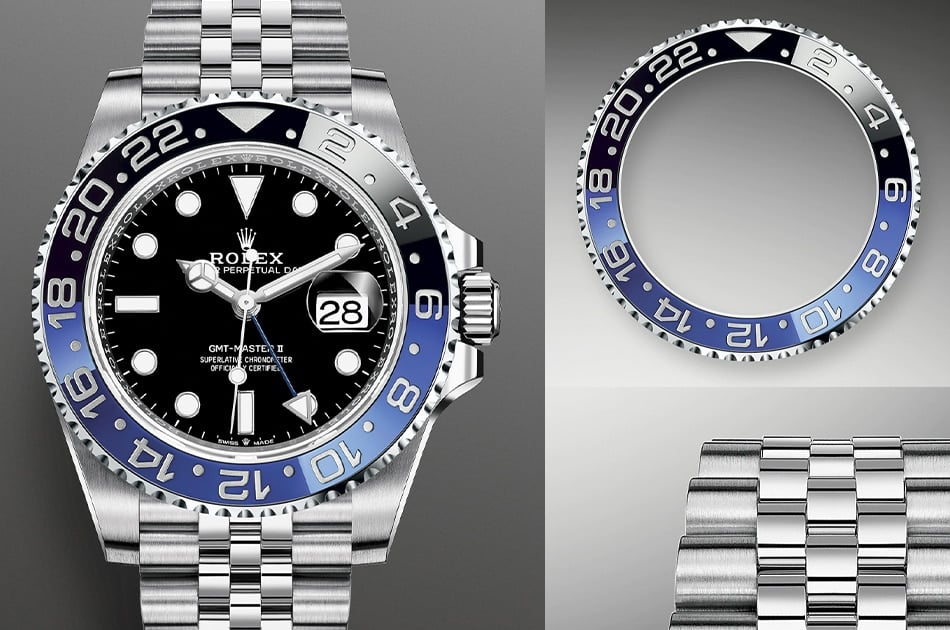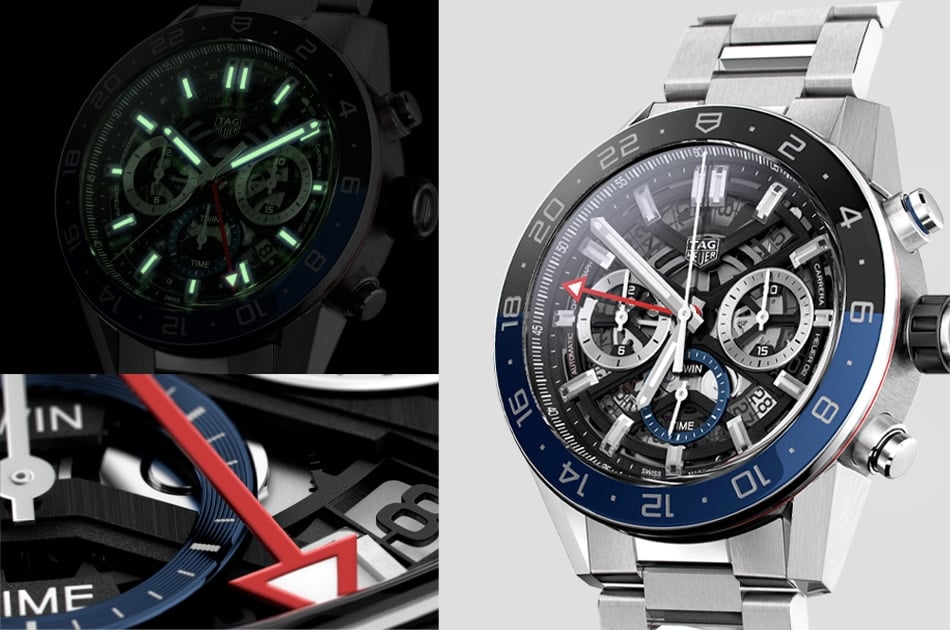Ever since Rolex debuted their contemporary GMT Master II at Baselworld 2018, this jetset gem found renewed life in the watch community. Past Rolex GMTs graced the pages of Sotheby’s catalogs over 45 times in 2020. As its star rose, so too did that of the GMT function itself. Sure, these days you can easily check other time zones on your phone. But if you’re sporting a GMT Master II, an Omega Planet GMT, or even a Citizen Navihawk GMT, don’t get caught not knowing how to work it. So today we’re teaching you how to use a GMT watch, from its multiple time zones to its compass.
A collaboration with Pan American airways, the original Rolex GMT Master was introduced in 1953. Pilots were already required to wear accurate and legible wristwatches. This new ability to tell time in multiple time zones was an innovative level-up. The additional fourth hand measures Greenwich Mean Time, the GMT’s namesake.

Your tools: The crown, hands, and bezel
The crown is your master control unit. Position 0 is its fully-screwed position, and where the crown should be whenever you aren’t setting or winding your watch. The first level upon unscrewing is position 1, which allows you to manually wind the movement. The next unit is position 2, which is used to set the hour and date. Finally, the furthest-most unit is position 3, which gives you control over the minute hand and the 24-hour GMT hand.
Of the watch’s four hands, the GMT is often red or orange with a triangular tip. This differentiates it from the seconds hand, which is usually a lollipop shape. Rolex sport watches typically feature a Mercedes hour hand. Regardless of what GMT watch you have, the manufacturer will likely visually diversify the hands.
The unidirectional bezel is used to set your second or third time zone. Rotate it clockwise to lose hours and go back in time. Rotate it counterclockwise to gain hours and move forward in time.
Winding your watch and setting your times
Winding the movement
Unscrew the crown from position 0 by turning it towards you. It’s now in position 1. Here, you can wind the watch by turning the crown away from you. You’ll know it’s working because you’ll feel resistance and you’ll hear beautiful, crisp clicking sounds. Manually charge your watch by winding the crown 20 rotations.

Setting the GMT/24-hour Hand
The next step is setting your GMT hand. Gently pull the crown all the way out to get to position 3. You’ll know you’re there because the second hand will stop moving.
I recommend starting with the position 3 settings because it’s easy to discern when you’ve fully pulled the crown out to position 3 from position 1. Comparatively, getting from position 1 to position 2 is a narrow window, versus simply pushing into 2 when you’ve finished with 3.
At position 3, rotate the crown to move the minute hand and the GMT hand. The minute hand has a quicker sweep than the GMT hand.
Purists will tell you to set the GMT/24-hour hand to Greenwich Mean Time. If you’re in New York and it’s 5pm, then it’s 10pm in Greenwich, London. That means you’ll set the GMT hand to 22:00 on the watch’s bezel.
Another option is setting your 24-hour hand to your local time, then rotating the bezel to change it to a different time zone of your choice. Again, you’re in New York and the hour hand is at 5pm. You’ll then set the GMT hand to 17:00. If you want Los Angeles, or PST, as your second time zone, you’ll just rotate the bezel clockwise so that the GMT hand is pointing to 14:00, or 2pm.
Now your hour hand is showing you New York time and the GMT hand is showing you LA time, simultaneously.

Setting the hour and date
Once you’re finished with position 3, gently push the crown in to get to position 2, where you’ll set the hour and date. Set the hour hand, the Mercedes in a GMT Master II, to the local time.
Every second time your hour hand passes the 12 o’clock point, the date will change. It will move forward a day if you’re rotating the hour hand clockwise, and it will go back a day if you’re moving it counterclockwise.
If today is the 29th, and it’s 5pm, make sure you do a full second lap with the hour hand, otherwise the watch will read it as 5am. For example, today is the 29th, but your date indicates that it’s the 28th. You rotate your hour hand over the 12 o’clock point twice to change it to the 29th. Rotate it past midnight one more time, to leave the AM realm and enter the PM realm, before leaving it at the 5 o’clock position.
The Rolex GMT Master II was the first Rolex with a 24-hour hand independent of this hour hand. So prior to 1983, this was a lot more complicated to do.
Using the bezel for a third time zone
If you want to access a third time zone, keep the 24-hour hand set to Greenwich Mean Time. Let’s stick with the example that you’re in New York and it’s 5pm. Set your 24-hour hand for GMT, 22:00, and your hour hand to 5pm.
You can pop in and out of a third time zone, say Los Angeles, by simply rotating the bezel. Rotate it counterclockwise to subtract the eight hours between PST and GMT.
Now you have New York time and Los Angeles time displayed simultaneously, and you can pop in and out of different time zones with just a few clicks of the bezel.
Throughout all this, remember to take daylight savings time into consideration!
Why Greenwich Mean Time?
GMT is the time in the Greenwich borough of London. All 24 time zones are based on GMT. For example, Eastern Standard Time is often written as EST -5, indicating that it’s five hours behind Greenwich Mean Time. In 1884, world leaders met at the Meridian Conference to determine a prime meridian (a north-south line) for the purpose of astronomical observation. Greenwich was chosen because of its zero longitude, and with this it also became the center of time in the world.
The compass
If you’re in the Northern hemisphere and if your GMT hand is set to local time, you can use your watch as a compass. Lay your watch flat and point the hour hand toward the sun. At this position, the GMT hand will be pointing North. Again, factor in the one hour difference for daylight savings time. Sure, this is something an app can do, but it’s a cool touch for a tool watch, and a fun party trick.
Disclosure: Clicking on these links and making a purchase may earn us a small referral fee, at no extra cost to you. Learn more here.


